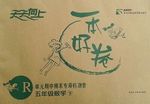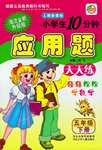
愉快的;高興的(adj.)
年老的;舊的(adj.)
聚會(huì);晚會(huì)(n.)
第一(num. )
第二(num.)
第三(num.)
第五(num.)
第八(num. )
第九(num.)
第十二(num.)
第二十(num.)
測(cè)驗(yàn);檢查(n.)
旅游;旅行(n. )
藝術(shù);美術(shù)(n.)
(音樂(lè)、戲劇等的) 會(huì)演節(jié);節(jié)日(n.)
happy old party first second third fifth eighth ninth twelfth twentieth test trip art festival
題目來(lái)源:2016全效學(xué)習(xí)中考學(xué)練測(cè)聽(tīng)課講義英語(yǔ)湖南師范大學(xué)出版社 > 七年級(jí)上冊(cè) 第1課時(shí)至第2課時(shí)


 天天向上一本好卷系列答案
天天向上一本好卷系列答案 小學(xué)生10分鐘應(yīng)用題系列答案
小學(xué)生10分鐘應(yīng)用題系列答案
| 年級(jí) | 高中課程 | 年級(jí) | 初中課程 |
| 高一 | 高一免費(fèi)課程推薦! | 初一 | 初一免費(fèi)課程推薦! |
| 高二 | 高二免費(fèi)課程推薦! | 初二 | 初二免費(fèi)課程推薦! |
| 高三 | 高三免費(fèi)課程推薦! | 初三 | 初三免費(fèi)課程推薦! |
科目:初中英語(yǔ) 來(lái)源: 題型:
How quickly can you count from one to ten? Do you use ten different words to do it? Can you do it in English,or do you have to use your first language? Do you count on your fingers? Many people think that numbers and math are the same all over the world. But scientists have discovered that it is not true.
People in different parts of the world use different ways to count on their fingers. In the United States,people begin counting with their first finger,which they extend or stick out. They then extend the rest of their fingers and finally the thumb to count to five. Then they repeat this with the other hand to get to ten. In China,people count by using different finger positions. In this way,a Chinese person can easily count to ten on only one hand.
Besides ways of finger counting,scientists have found that cultures and languages are also different when it comes to numbers. Some languages have only a few words for numbers,and others have no words for numbers. A group of scientists studied aboriginal (土著的) people in Australia. These people don't have hand movements to stand for numbers. They don't even have words for numbers. However,they are still able to understand different ideas about numbers.
In a similar study,researchers from the Massachusetts Institute of Technology discovered that people of the Piraha tribe (部落) in northwestern Brazil don't have words for numbers such as “one” or “three”. They are not able to say “five trees” or “ten trees” but can say “some trees”,“ more trees”,or “many trees”. Professor Edward Gibson said that most people believe that everyone knows how to count ,“ but here is a group that does not count. They could learn,but it's not useful in their culture,so they’ve never picked it up. ”
Although all humans are able to understand quantities (數(shù)量) ,not all languages have numbers and not all people use counting. Number words in a certain language are a result of people needing numbers in their daily lives. Now we know that people have different ideas about numbers and math,too.
1. The writer begins with the four questions in order to.
A. make a survey
B. interest readers
C. tell a story
D. solve math problems
2. What do we learn from the difference in finger counting between the US and China?
A. People from China count much faster than people from the US.
B. People from China need two hands to count from one to ten.
C. People of different cultures may use different ways of finger counting.
D. People of different cultures use the same way of finger counting.
3. Which of the following is true about aboriginal Australians?
A. They have only a few words for numbers.
B. They have hand movements to stand for numbers.
C. They can only count to five on their fingers.
D. They can understand different ideas about numbers.
4. The study of the Piraha tribe shows that.
A. people all over the world know how to count
B. people of the tribe have words for numbers
C. some groups of people are not smart enough to count
D. counting is not useful in the culture of the tribe
5. What is the main idea of the passage?
A. People from different cultures have different ideas about numbers and math.
B. Chinese people can count more easily on their fingers than Americans.
C. In some aboriginal cultures,people don't even know how to count.
D. Some languages don't have number words because people don't need numbers.
查看答案和解析>>
科目:初中英語(yǔ) 來(lái)源: 題型:
有;經(jīng)受;經(jīng)歷(v.)
兒子(n.)
堂兄(弟、姊、妹) ;表兄(弟、姊、妹) (n.)
(外) 祖父;爺爺;外公;姥爺(n.)
媽媽(n.)
姑母;姨母;伯母;嬸母;舅母(n.)
(外) 祖母;奶奶;外婆;姥姥(n. )
爸爸(n.)
舅父;叔父;伯父;姑父;舅父(n.)
女兒(n.)
照片(n. )
下一個(gè)(的) ;接下來(lái)(的) (adj.&n.)
照片;圖畫(huà)(n.)
查看答案和解析>>
科目:初中英語(yǔ) 來(lái)源: 題型:
當(dāng)然;肯定;一定(adv.)
蔬菜(n.)
水果(n.)
正確的;適當(dāng)?shù)?adj.)
蘋(píng)果(n.)
蛋;雞蛋(n.)
胡蘿卜(n.)
大米;米飯(n. )
雞肉(n. )
早餐;早飯(n.)
午餐(n.)
明星;星星(n.)
習(xí)慣(n. )
查看答案和解析>>
科目:初中英語(yǔ) 來(lái)源: 題型:
1. 和某人一起玩游戲play games sb.
2. 思考;思索 about
3. (提出建議) ......怎么樣how …
4. ......多少錢 much …
5. 一雙 a of
6. ......多大年紀(jì)how …
7. 從......到......from ... …
8. 晚餐后 dinner
9.在我們的促銷(活動(dòng)) 中 our great sale
查看答案和解析>>
科目:初中英語(yǔ) 來(lái)源: 題型:
早的(adj.)
五十(num.)
工作;職業(yè)(n.)
工作(n.)
電(視) 臺(tái);車站(n.)
(表示整點(diǎn)) ……點(diǎn)鐘(adv.)
奇怪的;滑稽好笑的(adj.)
鍛煉;練習(xí)(v.&n.)
最好的(adj.) ;最好地;最(adv.)
組;群(n.)
一半;半數(shù)(n.&pron)
晚于;過(guò)(時(shí)間)(prep) ;過(guò)去的(adj.)
一刻鐘;四分之一 (n.)
家庭作業(yè)(n.)
跑;奔(v.)
行走;步行(n.&v.)
打掃;弄干凈(v.) ;干凈的(adj.)
查看答案和解析>>
科目:初中英語(yǔ) 來(lái)源: 題型:
5. 擁有一座橋是他們的夢(mèng)想。
is their dream a bridge.
6. 坐汽車從不無(wú)聊,因?yàn)槲铱偸歉业耐瑢W(xué)交談。
The bus ride never boring I always talk to my classmates.
7. 別把臟盤(pán)子留在廚房。
the dirty dishes the kitchen.
8. 在能看電視之前,我必須要先讀一本書(shū)。
I must a book can watch TV.
9. 但是對(duì)于中國(guó)小鄉(xiāng)村里的學(xué)生來(lái)說(shuō),這很難。
But students a small village China,it is difficult.
查看答案和解析>>
科目:初中英語(yǔ) 來(lái)源: 題型:
() 11. My father has a great sports collection,
he plays sports every day.
A. or B. but
C. and
查看答案和解析>>
科目:初中英語(yǔ) 來(lái)源: 題型:
() 1. - What do you usually do on weekends?
Well,I ususlly go with my mom.
A. shop B. shops
C. shopping
查看答案和解析>>
百度致信 - 練習(xí)冊(cè)列表 - 試題列表
湖北省互聯(lián)網(wǎng)違法和不良信息舉報(bào)平臺(tái) | 網(wǎng)上有害信息舉報(bào)專區(qū) | 電信詐騙舉報(bào)專區(qū) | 涉歷史虛無(wú)主義有害信息舉報(bào)專區(qū) | 涉企侵權(quán)舉報(bào)專區(qū)
違法和不良信息舉報(bào)電話:027-86699610 舉報(bào)郵箱:58377363@163.com